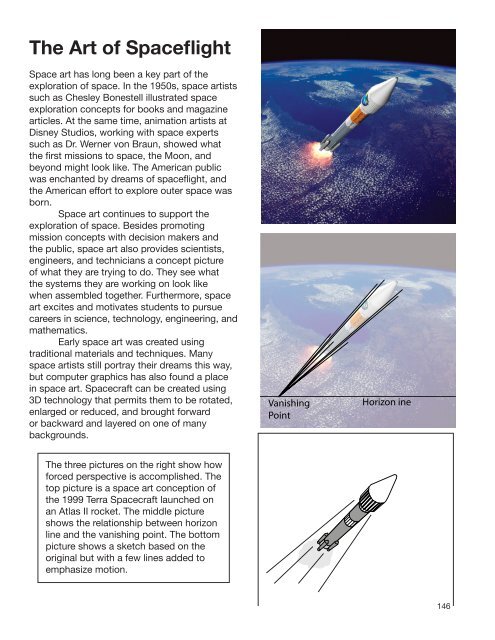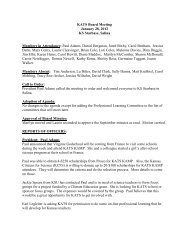Create successful ePaper yourself
Turn your PDF publications into a flip-book with our unique Google optimized e-Paper software.
The Art of Spaceflight<br />
Space art has long been a key part of the<br />
exploration of space. In the 1950s, space artists<br />
such as Chesley Bonestell illustrated space<br />
exploration concepts for books and magazine<br />
articles. At the same time, animation artists at<br />
Disney Studios, working with space experts<br />
such as Dr. Werner von Braun, showed what<br />
the first missions to space, the Moon, and<br />
beyond might look like. The American public<br />
was enchanted by dreams of spaceflight, and<br />
the American effort to explore outer space was<br />
born.<br />
Space art continues to support the<br />
exploration of space. Besides promoting<br />
mission concepts with decision makers and<br />
the public, space art also provides scientists,<br />
engineers, and technicians a concept picture<br />
of what they are trying to do. They see what<br />
the systems they are working on look like<br />
when assembled together. Furthermore, space<br />
art excites and motivates students to pursue<br />
careers in science, technology, engineering, and<br />
mathematics.<br />
Early space art was created using<br />
traditional materials and techniques. Many<br />
space artists still portray their dreams this way,<br />
but computer graphics has also found a place<br />
in space art. Spacecraft can be created using<br />
3D technology that permits them to be rotated,<br />
enlarged or reduced, and brought forward<br />
or backward and layered on one of many<br />
backgrounds.<br />
The three pictures on the right show how<br />
forced perspective is accomplished. The<br />
top picture is a space art conception of<br />
the 1999 Terra Spacecraft launched on<br />
an Atlas II <strong>rocket</strong>. The middle picture<br />
shows the relationship between horizon<br />
line and the vanishing point. The bottom<br />
picture shows a sketch based on the<br />
original but with a few lines added to<br />
emphasize motion.<br />
146










